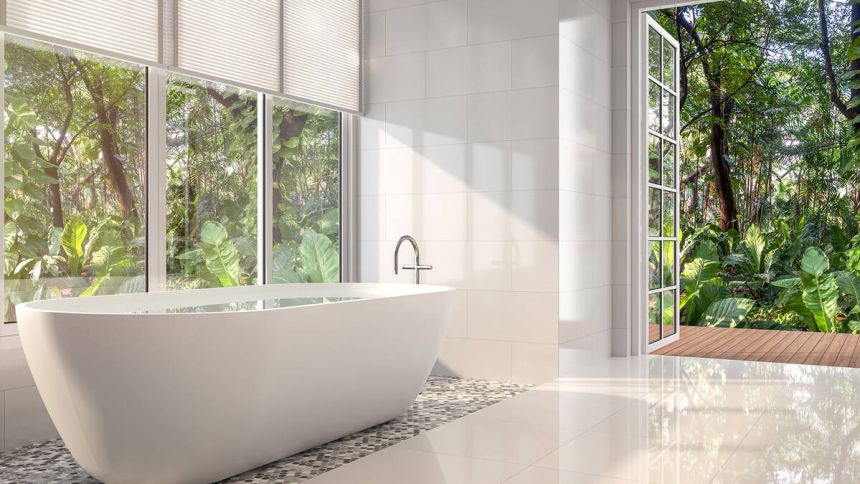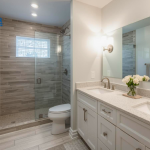Why Ventilation Matters More Than You Think
Ventilation is one of the most critical yet overlooked aspects of a well-designed bathroom. While it’s easy to focus on the visual appeal of tiles, taps, and tubs, the constant exposure to moisture in a bathroom makes airflow essential. Without proper ventilation, condensation builds up and settles on walls, mirrors, and ceilings. Over time, this can cause problems ranging from minor cosmetic issues to serious structural damage. It also creates the perfect environment for mould and mildew to flourish, posing potential risks to your health and home.
Everyday Moisture and Its Long-Term Effects
A single hot shower can release a surprising amount of steam into the air. In a poorly ventilated room, that moisture has nowhere to go. It clings to surfaces, seeps into plaster, and begins to warp wood and soften paint. Even high-quality finishes can’t perform to their full potential in a space that’s constantly damp. Bathroom tiles, while water-resistant, can still fall victim to mould growing in grout lines if the environment remains humid for long periods. This not only affects the overall hygiene of the room but also ruins the look of an otherwise spotless finish.
Extractor Fans and Modern Ventilation Solutions
Many UK homes rely on extractor fans to help draw moisture out of the bathroom. These can be as simple as a switch-operated model or as advanced as a humidity-sensing, low-noise unit that activates automatically. Choosing the right fan depends on the size and layout of the room, but even a compact system can make a significant difference. In homes with older ventilation setups, an upgrade can improve performance without compromising on design. Modern units are far more discreet and energy efficient, meaning they can operate continuously without creating a noticeable hum or spike in your electricity bill.
The Visual Benefits of Good Airflow
It’s not just about preventing damage. Proper ventilation also helps your bathroom look its best for longer. Without steam constantly clouding the air, tiles shine brighter, mirrors stay clear, and surfaces dry faster. This makes regular cleaning easier and more effective, reducing the effort needed to maintain a pristine appearance. When you’ve invested in premium materials such as bathroom tiles, underfloor heating, or a bespoke shower enclosure, it makes sense to ensure they stay in peak condition. Adequate airflow helps protect that investment and keeps the space feeling fresh, clean, and inviting.
Natural Ventilation in Older and Modern Homes
In some properties, particularly period homes or cottages, windows may still be the main source of ventilation. Opening a window after a bath or shower can be effective, especially in warmer months. However, in the middle of a British winter, it’s less practical. Modern homes are built with this in mind, often including trickle vents, extractor fans, and even whole-house ventilation systems to meet building regulations. Regardless of your home’s age, a tailored solution is always possible. It’s just a matter of knowing how to balance airflow with insulation and energy efficiency.
Complying with UK Building Regulations
Bathroom ventilation isn’t just a matter of comfort; it’s also a legal requirement in the UK. Building regulations stipulate that bathrooms without windows must have extractor fans installed to meet specific airflow rates. These are designed to prevent long-term damage caused by trapped moisture and to reduce the risks of mould build-up. During a bathroom renovation or extension, your contractor should take care of this automatically. Still, it’s worth checking that any new installation meets or exceeds the minimum requirements to ensure your bathroom performs well for years to come.
How Ventilation Supports Other Design Choices
A healthy bathroom isn’t just about air quality. Ventilation works alongside other elements like heating, lighting, and tiling to create a space that functions as well as it looks. For example, even the best-laid bathroom tiles will lose their appeal if condensation constantly dulls their surface. A well-ventilated room allows these materials to stay cleaner and more vibrant for longer. Similarly, good airflow supports your heating system by reducing dampness, which can make the room feel cold and clammy even when the radiator is on. All of these components work better together when ventilation is treated as a priority.
Creating a Long-Term Healthy Environment
Preventing condensation and mould isn’t just about avoiding surface damage. A damp bathroom can create problems that spread beyond the room itself, especially in semi-detached or terraced houses where moisture can migrate into shared walls. This makes early investment in ventilation a sound choice for long-term comfort and property maintenance. Whether you’re planning a full bathroom refurbishment or just want to improve an existing space, taking the time to consider ventilation now can save money and hassle later on.
A Small Detail That Makes a Big Difference
When choosing tiles, fittings, or luxury fixtures, it’s easy to overlook what’s happening behind the scenes. Yet the comfort, cleanliness, and longevity of your bathroom all hinge on how well air moves through the space. Whether it’s an extractor fan in a compact en-suite or a roof vent in a loft conversion, a smart approach to ventilation is the hidden ingredient in any healthy, high-performing bathroom.
Lynn Martelli is an editor at Readability. She received her MFA in Creative Writing from Antioch University and has worked as an editor for over 10 years. Lynn has edited a wide variety of books, including fiction, non-fiction, memoirs, and more. In her free time, Lynn enjoys reading, writing, and spending time with her family and friends.















